Key takeaways:
- Active participation in workshops fosters shared learning and creativity, where diverse insights enhance discussions.
- Techniques such as arranging seating for inclusivity, using icebreakers, and small group discussions can significantly improve engagement.
- Incorporating activities like breakout groups, collaborative walls, and role-playing scenarios promotes collaboration and deeper understanding among participants.
- Measuring participation success through surveys and observing group dynamics provides valuable insights into engagement levels and areas for improvement.
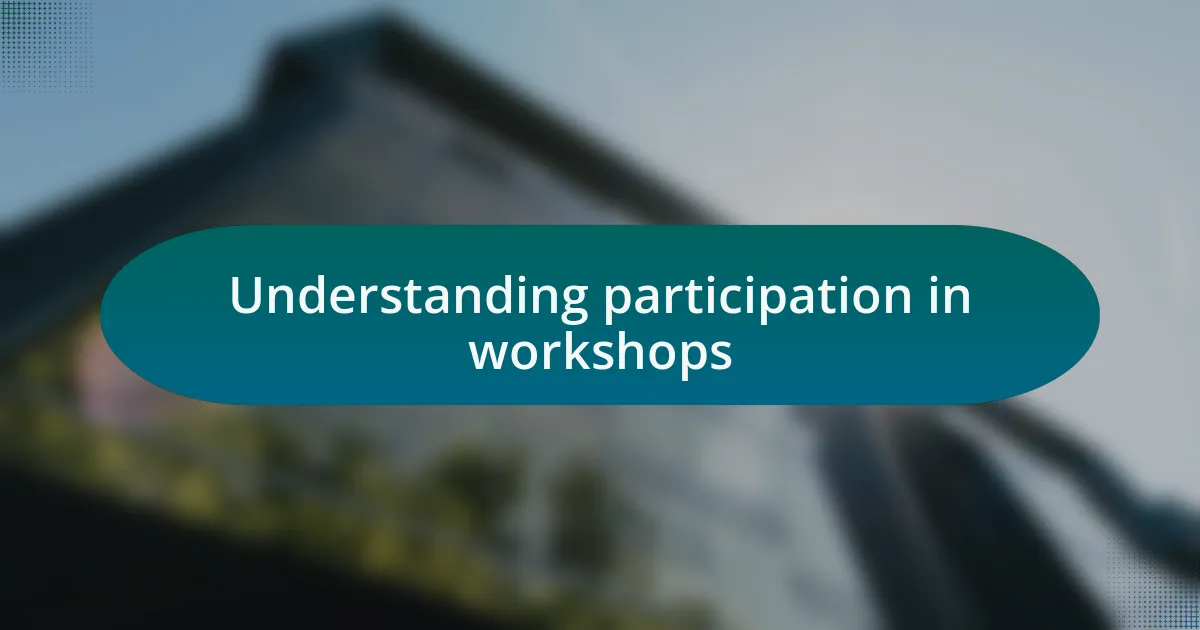
Understanding participation in workshops
Participation in workshops goes beyond merely attending; it’s about creating a space where everyone feels valued and heard. Reflecting on my own experiences, I’ve often found that when I actively contribute my ideas, it not only enhances my learning but also encourages others to share. Have you ever noticed how a single question can spark a lively discussion, transforming the atmosphere from passive to engaging?
I remember a workshop where one participant hesitantly shared her thoughts about the topic, and it quickly turned into a vibrant exchange of perspectives. It struck me how powerful that moment was—her participation ignited enthusiasm among others, creating a ripple effect. That’s a perfect example of how emotional investment in a workshop can foster an environment of shared learning and collective creativity.
Understanding participation involves recognizing that each person brings unique insights and experiences to the table. This diversity can lead to richer discussions, but it requires intentional efforts to encourage input from everyone. Why do we sometimes hesitate to share our ideas? Personally, I’ve learned that building a culture of participation means not just inviting others to speak, but actively cultivating trust and connection within the group.

Techniques for fostering participation
Creating an inviting atmosphere is essential for fostering participation. I often make a point to physically arrange the seating in a circle or semi-circle during workshops; this setup makes everyone feel more included. Have you ever noticed how the layout of a room can influence the flow of conversation? When participants can see each other, it encourages eye contact and engagement, making it easier for them to speak up.
Another technique that I’ve found effective is using icebreaker activities. These can be simple questions or short group tasks that encourage participants to interact right from the start. I recall a workshop where we played a quick game to share our expectations for the session. The laughter and initial bonding created a relaxed environment that made it much easier for everyone to contribute throughout the day. Don’t you think starting with some fun can set a positive tone for deeper conversations?
Lastly, incorporating small group discussions can significantly enhance participation. I often break attendees into pairs or small teams to tackle specific topics before sharing their insights with the larger group. I once did this during a tech workshop, and the quietest individuals began to shine in those smaller settings. It was a revelation; their confidence grew exponentially when they felt their voices mattered in a comfortable context. Isn’t it fascinating how nurturing smaller dynamics can lead to a more united front in larger discussions?
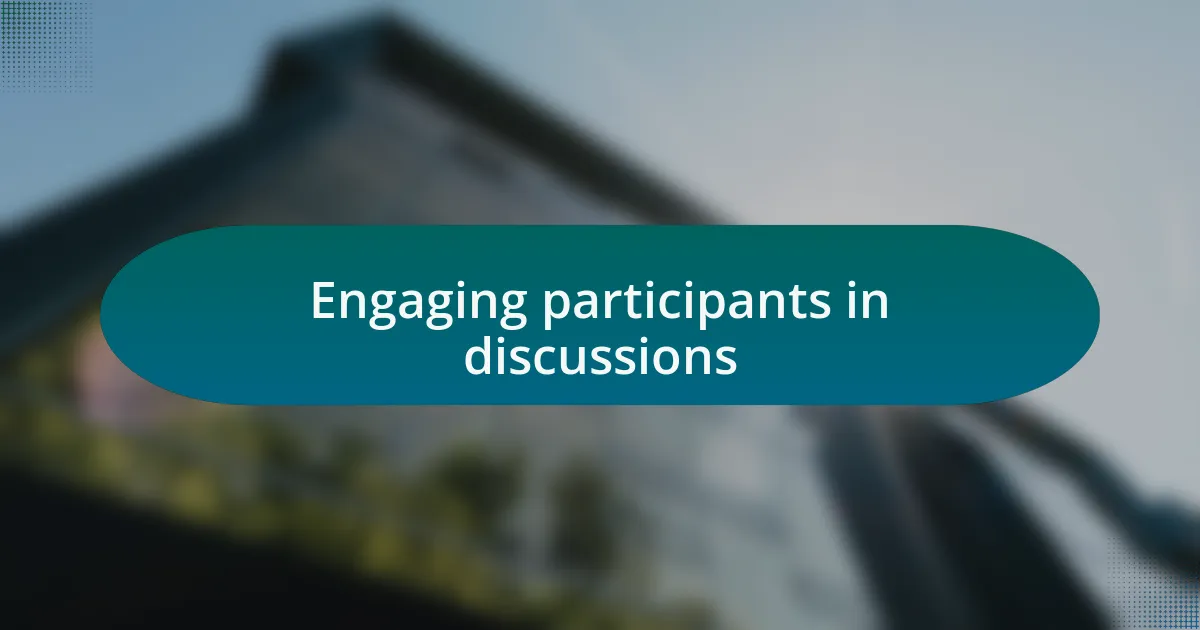
Engaging participants in discussions
Engaging participants in discussions often requires a bit of creativity on my part. One method that has proven particularly successful is incorporating real-time polls or questions during a session. I remember a workshop where I asked attendees to anonymously vote on their biggest challenges in tech. The answers came flooding in, each one sparking lively debates among the group. Isn’t it interesting how anonymity can empower even the shyest voices?
I’ve also found that using storytelling can be a powerful tool to engage participants. When I share a relevant personal experience, I notice the room quiets down and everyone leans in. Just last month, I recounted a challenge I faced in a project, and it resonated deeply with my audience. Suddenly, many were eager to share their own stories, bridging connections and elevating the dialogue. Why do you think sharing vulnerabilities opens the door for others to engage more freely?
Lastly, I like to encourage questions throughout the discussion, making them an integral part of the conversation rather than a separate segment. During one workshop, I created an ongoing “question board” where participants could jot down inquiries anonymously as they came to mind. This method transformed our dialogue into a collaborative exploration, where everyone’s curiosity shaped the direction of our discussions. How empowering is it to see your questions drive the conversation?
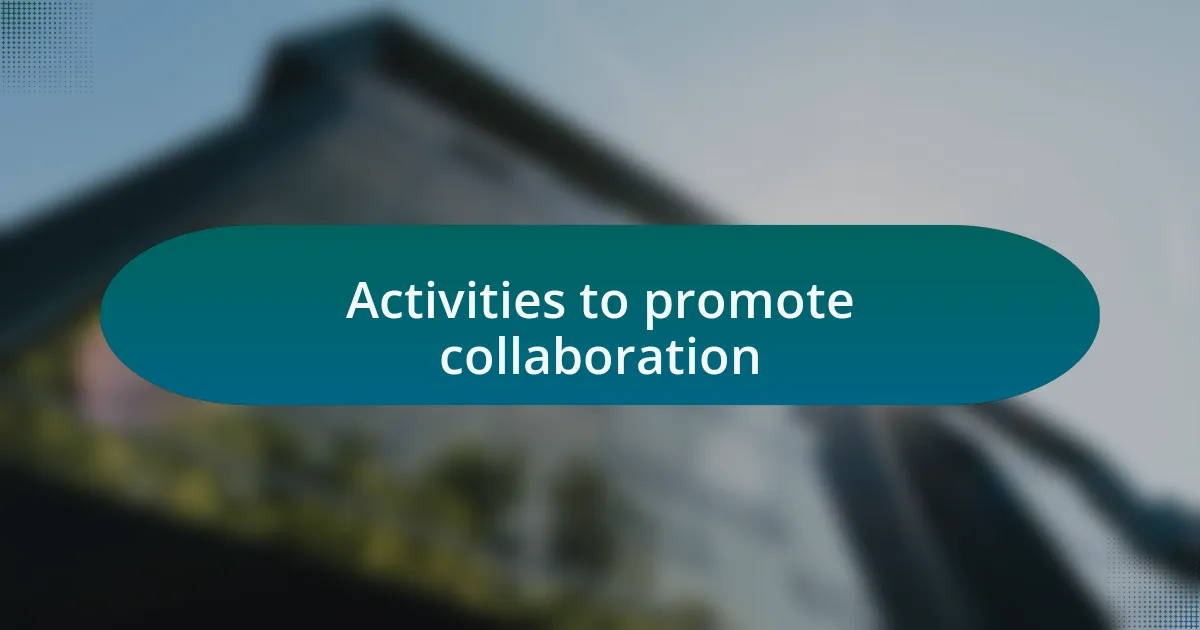
Activities to promote collaboration
One activity that has truly transformed my workshops is the use of breakout groups for collaborative tasks. I once assigned small teams to brainstorm solutions to a common tech issue. The excitement in the room was palpable as ideas bounced around, and the diverse perspectives really enriched the discussions. How incredible is it to witness a group come together, each member contributing a unique insight that helps shape a more comprehensive solution?
Another technique I love is the “collaborative wall,” where participants contribute ideas, comments, or suggestions on sticky notes throughout the session. During a recent workshop, I introduced this concept, and it became a visual tapestry of thoughts and strategies. It was amazing to see real-time engagement; some attendees would approach the wall during breaks, further discussing ideas sparked by their peers. Have you ever considered how visual elements can enhance collaborative thinking?
Finally, incorporating role-playing scenarios can also foster collaboration in a dynamic way. In one workshop, we acted out different roles in a project scenario, which allowed participants to step into each other’s shoes. The realization of how various perspectives contribute to problem-solving was enlightening. It’s fascinating to think about how experiencing someone else’s viewpoint can deepen empathy and encourage collective brainstorming. What do you think happens when we immerse ourselves in another’s role?
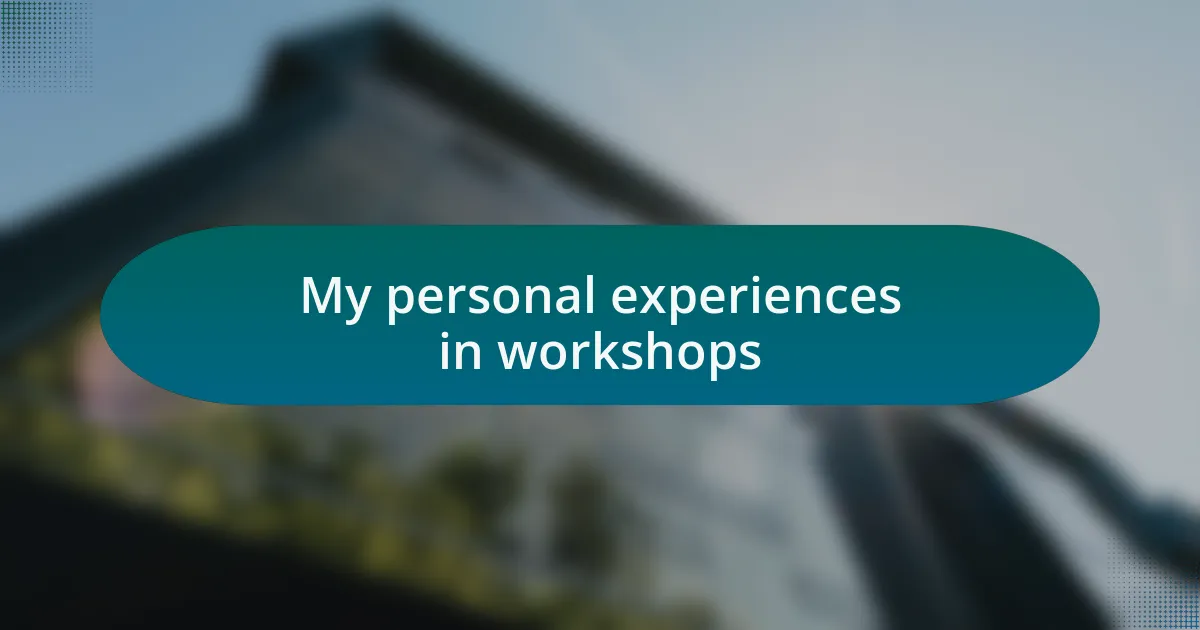
My personal experiences in workshops
In my journey through numerous workshops, I’ve encountered a range of experiences that highlight the essence of participation. I’ll never forget a particular session where I encouraged everyone to share their “aha” moments. The energy shifted dramatically as people opened up about their breakthroughs; it felt like a communal celebration of learning. This powerful moment left me wondering, how did we build such an authentic space for sharing?
Another experience that stands out was a panel discussion I organized with varying levels of expertise represented. I remember the initial hesitation from some participants to voice their thoughts, but as the conversation flowed, so did their confidence. I realized then that creating an inclusive environment can break barriers; it struck me how vital it is to actively listen and validate everyone’s input. Isn’t it interesting how just a few encouraging words can transform reluctance into enthusiasm?
One workshop I led focused on a live coding session, incorporating real-time problem-solving among participants. As we tackled issues together, laughter and moments of frustration filled the room, creating a memorable shared experience. This blend of emotions turned a technical practice into a team-building exercise, reinforcing my belief that formal learning can thrive when participants feel a profound connection. Have you experienced that moment when a challenge brings a group closer together?
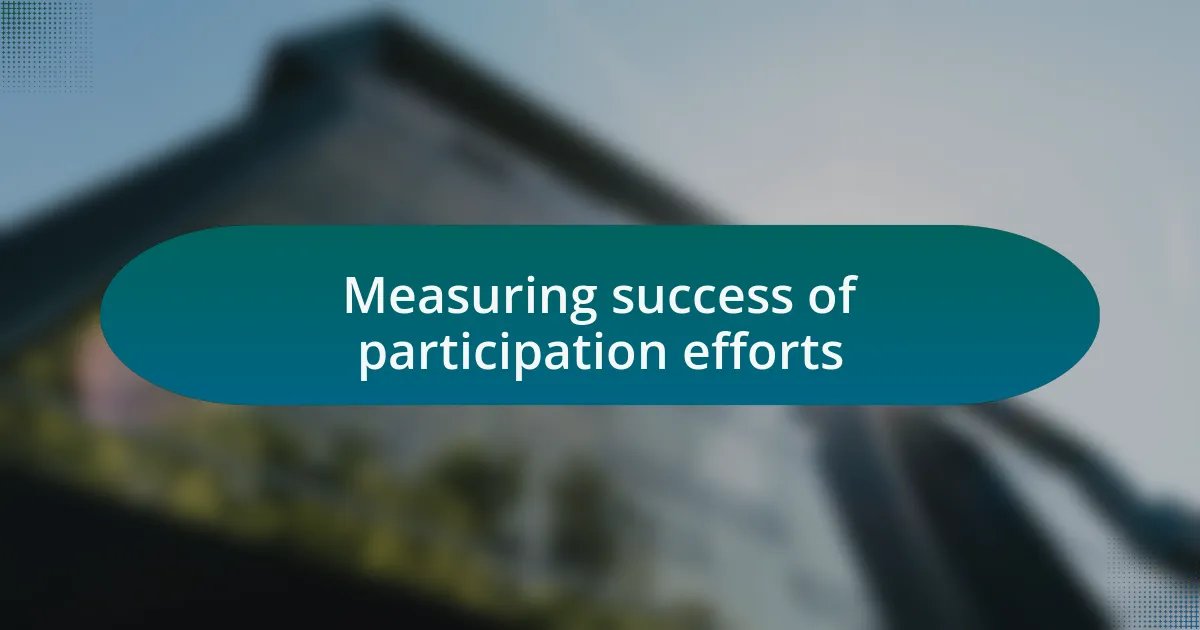
Measuring success of participation efforts
Measuring the success of participation efforts can be a revealing process. In a recent workshop, I sought feedback through anonymous surveys. It was eye-opening to see how a simple statistical measure transformed my understanding of participant engagement. The insights gleaned from those surveys not only showcased areas for improvement but also highlighted the moments that truly resonated with my attendees.
I’ve also found that qualitative data can be just as powerful. During a follow-up discussion, I encouraged participants to share their experiences verbally. Listening to their stories about how the workshop impacted their perspectives was incredibly rewarding. Isn’t it fascinating how personal narratives can provide a deeper understanding of success beyond just numbers?
Lastly, I like to observe the dynamics during the sessions themselves. I remember a workshop where I noticed more people partnering up for discussions. The energy in the room shifted, and I could feel the collective excitement bubbling. Have you ever noticed how the atmosphere can change when participants feel truly engaged? That shift is priceless and, to me, a clear indicator of successful participation efforts.